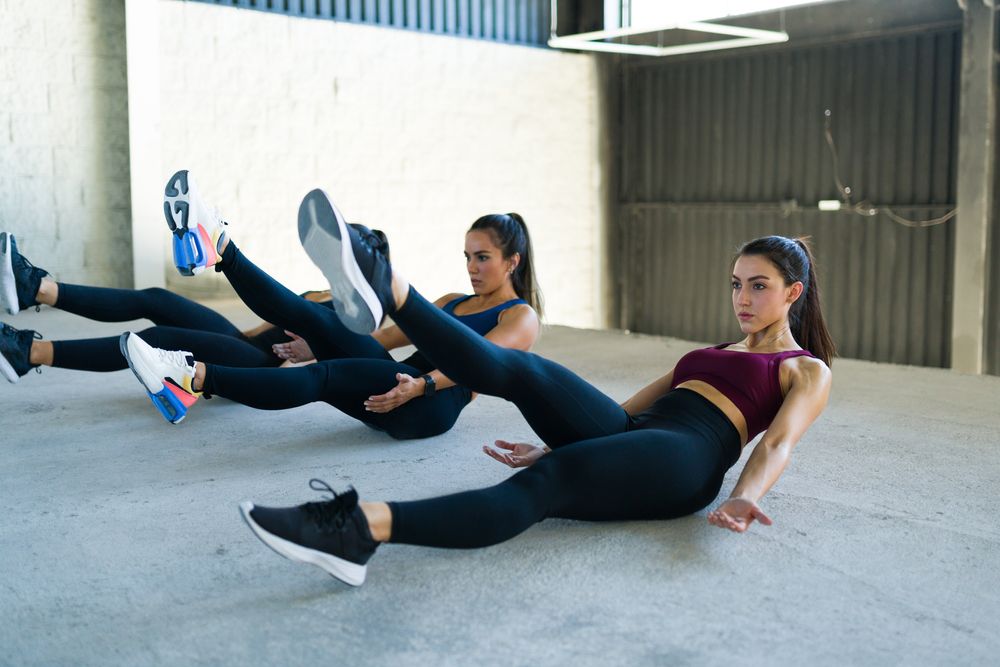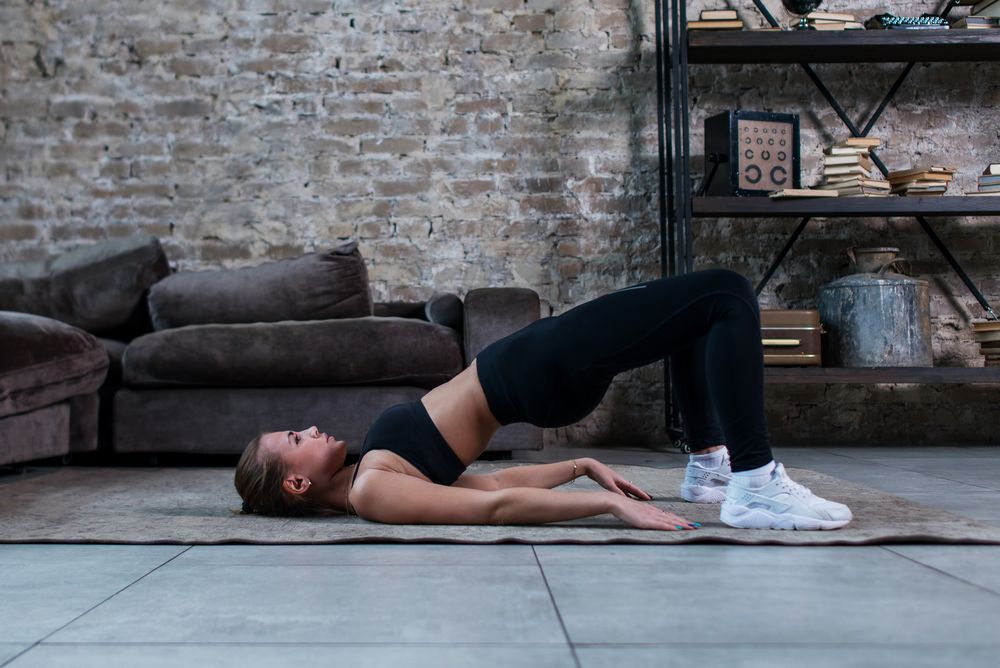
When it comes to fitness, achieving a toned and lean midsection is a goal many strive for—but it takes more than endless crunches to get there. Functional training offers a smarter, more effective approach to sculpting a strong, defined core while strengthening your entire body. By focusing on movements that mimic real-life activities, functional exercises work your abdominal muscles while improving balance, stability, and coordination. Plus, they engage multiple muscle groups, making them highly effective for burning calories and reducing excess fat around your waistline.
The beauty of functional training is its practicality. These exercises are designed to enhance how your body performs everyday tasks, such as lifting, bending, twisting, and balancing. By training your core to stabilize and support these movements, you not only work toward a sculpted belly but also protect your lower back, improve posture, and reduce the risk of injury. This holistic approach ensures you're not just building visible muscle but also creating a strong foundation for overall fitness and better daily performance.
If you’re ready to elevate your workouts and achieve a leaner, more defined waistline, these functional exercises are a game-changer. From foundational moves like the plank to dynamic challenges like the Turkish get-up, each exercise uniquely targets your core. Incorporate them into your routine consistently, and you’ll not only see improvements in your core strength but also feel the difference in how effortlessly you move through everyday life.
Dead Bug
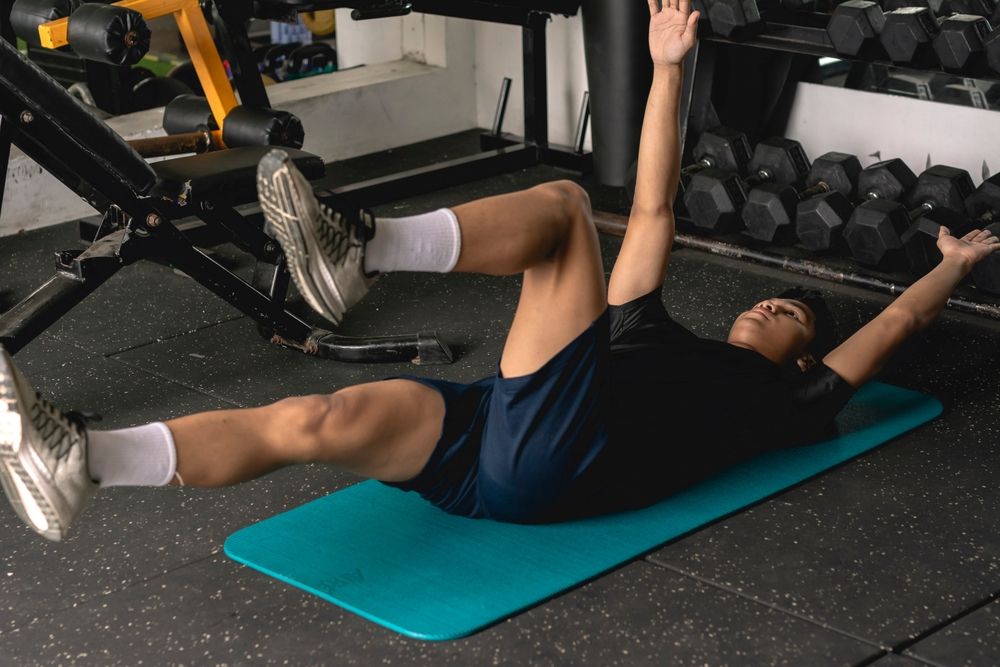
The dead bug is an excellent exercise for building core stability and control. It trains your abdominal muscles to resist extension, which is crucial for protecting your lower back and enhancing posture. By keeping your core engaged throughout the movement, you lay a strong foundation for performing more advanced exercises with proper form and stability.
How to Perform the Dead Bug:
- Lie on your back with your arms extended toward the ceiling and your knees bent at a 90-degree angle.
- Slowly lower your right arm and left leg toward the ground, keeping your core tight and your lower back pressed flat against the floor.
- Return to the starting position and repeat the movement with your left arm and right leg.
- Perform 3 sets of 12 repetitions per side.
This controlled movement helps strengthen your core while reinforcing proper alignment and posture, making it a must-have in any workout routine.
Pallof Press
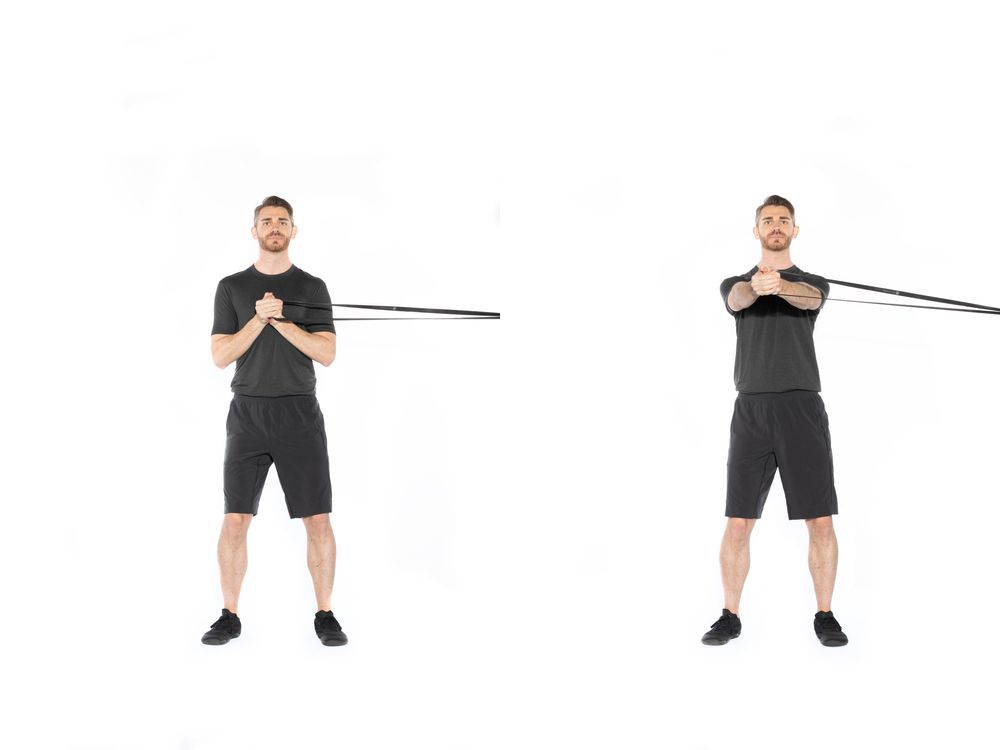
The Pallof press is a cornerstone of functional training, and for good reason. This anti-rotation exercise targets your obliques and deep core muscles, teaching them to resist rotational forces. This is essential for maintaining stability during everyday movements. Additionally, the Pallof press enhances balance and coordination, making it a highly effective addition to your core routine.
How to Perform the Pallof Press:
- Attach a resistance band to a sturdy anchor at chest height.
- Stand perpendicular to the anchor, holding the band with both hands at your chest.
- Step away from the anchor to create tension in the band, ensuring your stance is stable.
- Extend your arms straight out in front of you, resisting the pull of the band.
- Hold the position for 2 seconds before bringing your hands back to your chest.
- Perform 3 sets of 10 repetitions per side.
By focusing on controlled movement and core engagement, the Pallof press builds a stronger, more stable core, reducing your risk of injury and enhancing overall functional strength.
Plank with Shoulder Tap
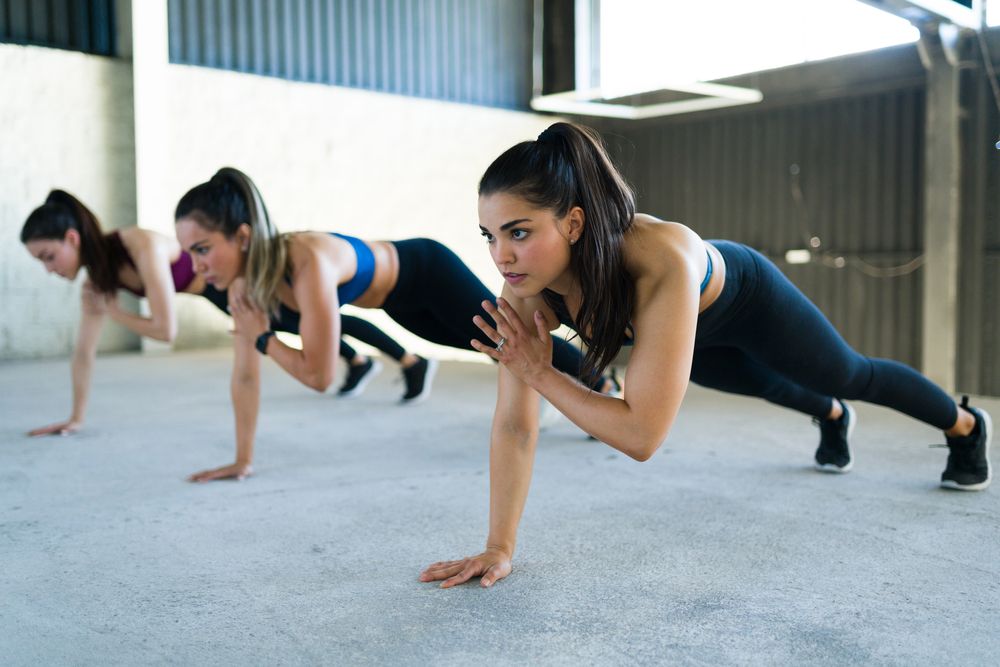
This plank variation adds a dynamic twist, challenging your core stability and coordination while engaging your entire body. Shoulder taps force your abdominal muscles to stabilize your torso and resist rotation, enhancing overall core strength. Additionally, this move activates your shoulders and arms, making it a full-body workout.
How to Perform Shoulder Taps:
- Start in a high plank position with your hands directly under your shoulders and your feet slightly wider than hip-width apart for stability.
- Lift your right hand and tap your left shoulder, keeping your hips steady and square to the floor.
- Return your hand to the floor and repeat with your left hand tapping your right shoulder.
- Maintain a straight line from your head to your heels throughout the movement.
- Perform 3 sets of 10 taps per side.
By focusing on controlled movement and minimizing hip sway, shoulder taps improve core stability, upper-body strength, and overall body control.
Woodchopper
The woodchopper is a powerful, dynamic exercise that strengthens your obliques through rotational movement. This functional exercise mimics everyday twisting actions, such as turning to lift or place objects, while also engaging your core and shoulders. It’s an excellent addition to any workout routine to build strength and add variety.
How to Perform the Woodchopper:
- Hold a dumbbell or medicine ball with both hands.
- Stand with your feet shoulder-width apart, keeping your core engaged.
- Start with the weight near one hip, and rotate diagonally across your body to lift it above the opposite shoulder.
- Reverse the motion, bringing the weight back down to the starting position.
- Perform 3 sets of 12 repetitions per side.
By incorporating controlled movement and proper form, the woodchopper improves rotational strength, enhances functional fitness, and helps sculpt a more defined core.
Single-Leg Romanian Deadlift
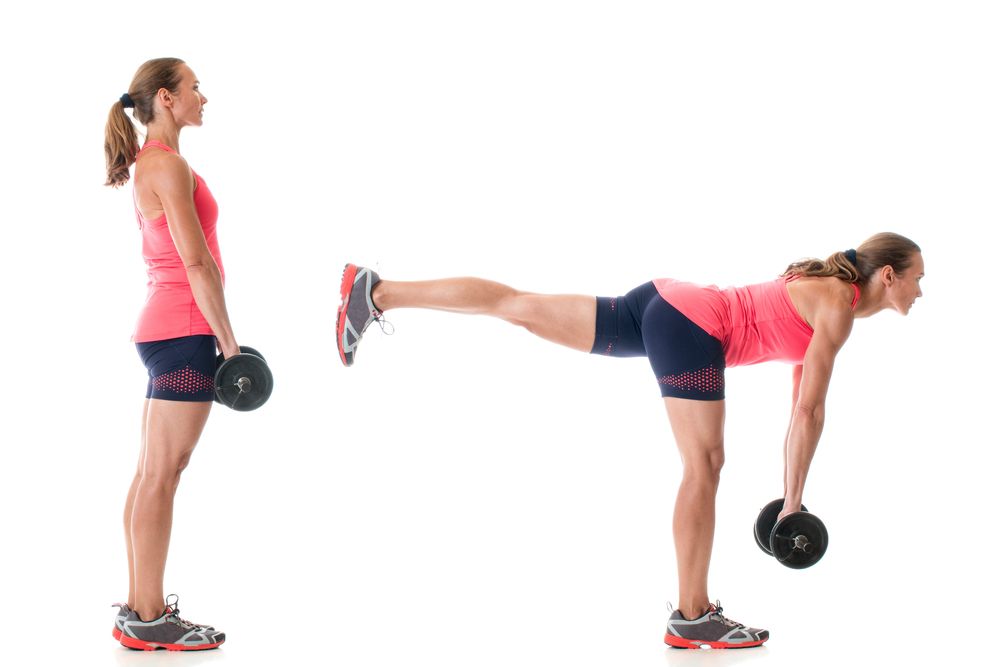
This single-leg exercise is a powerhouse for building strength in your posterior chain while improving balance and core stability. By focusing on one leg at a time, it activates your core to stabilize your torso, making it an effective functional movement for enhancing strength, mobility, and coordination.
How to Perform the Single-Leg Deadlift:
- Hold a dumbbell in your right hand and balance on your left leg.
- Hinge at your hips, lowering the dumbbell toward the ground as you extend your right leg straight behind you.
- Keep your back flat, your chest lifted, and your core engaged throughout the movement.
- Return to the starting position in a controlled motion.
- Perform 3 sets of 10 repetitions per side.
This exercise not only strengthens your glutes, hamstrings, and lower back but also improves your overall balance and functional stability, making it a valuable addition to your workout routine.
Bird Dog
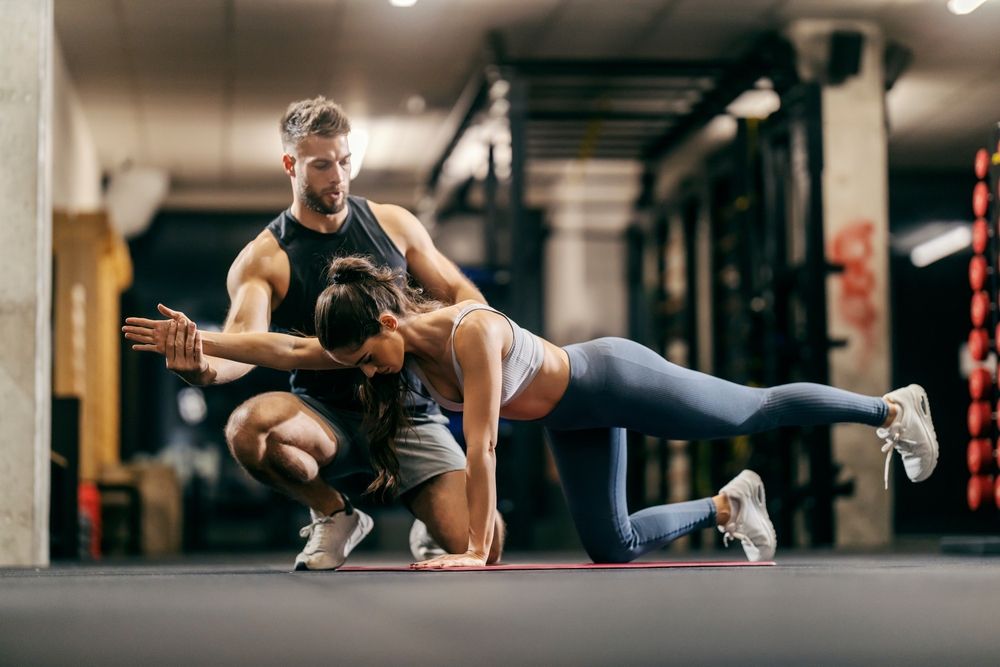
The bird dog is an excellent core exercise that enhances stability, coordination, and overall strength in the lower back and abdominals. By mimicking functional movements like crawling and climbing, it helps improve posture, balance, and body control. Its low-impact nature makes it suitable for all fitness levels.
How to Perform the Bird Dog:
- Begin on your hands and knees, with your wrists aligned under your shoulders and your knees directly under your hips.
- Extend your right arm forward and your left leg straight back, keeping your hips level and square to the floor.
- Hold this position for 2–3 seconds, maintaining a straight line from your fingertips to your toes.
- Return to the starting position and repeat on the opposite side.
- Perform 3 sets of 10 repetitions per side.
This simple yet effective exercise builds core stability, strengthens the lower back, and enhances overall body awareness, making it a valuable addition to any fitness routine.
Lateral Lunge
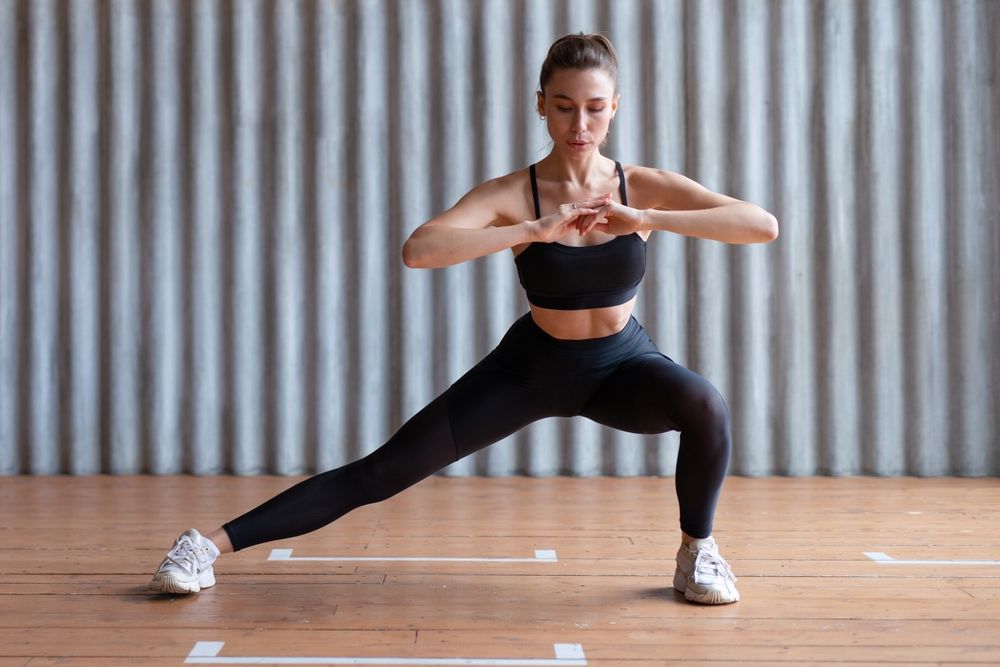
Lateral lunges are an effective lower-body exercise that also improves mobility and balance. By moving side-to-side, they target your adductors and obliques—muscles often overlooked in traditional workouts. This exercise is also great for enhancing hip flexibility and core stability.
How to Perform Lateral Lunges:
- Stand with your feet hip-width apart and your hands clasped in front of your chest for balance.
- Step your right foot out to the side, bending your knee and pushing your hips back as you lower into the lunge. Keep your left leg straight and your chest lifted.
- Push through your right heel to return to the starting position.
- Repeat the movement on the left side.
- Perform 3 sets of 12 repetitions per side.
Lateral lunges are a fantastic addition to your routine for building strength, improving joint mobility, and promoting functional movement patterns.
Side Plank with Hip Dip
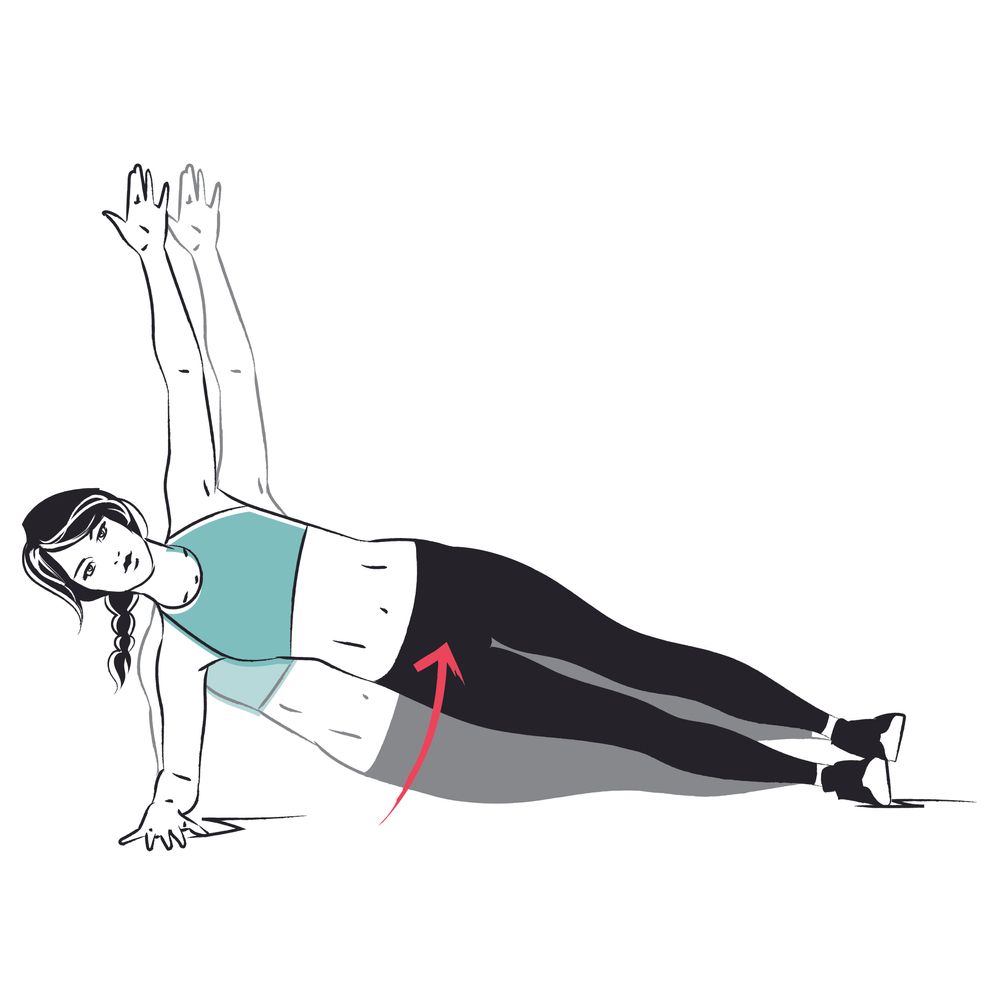
The side plank with hip dip elevates the traditional side plank by adding dynamic movement, intensifying the challenge to your obliques and deep core muscles. This variation not only strengthens your core but also helps define your waistline and improves overall stability.
How to Perform the Side Plank with Hip Dip:
- Lie on your side with your elbow directly under your shoulder, and stack your feet on top of each other.
- Lift your hips to form a straight line from your head to your heels, maintaining a strong and stable side plank position.
- Lower your hips slightly toward the floor, then lift them back to the starting position in a controlled motion.
- Perform 3 sets of 12 dips on each side.
This exercise is an excellent way to build core strength, enhance stability, and add variety to your workout routine.
Reverse Plank
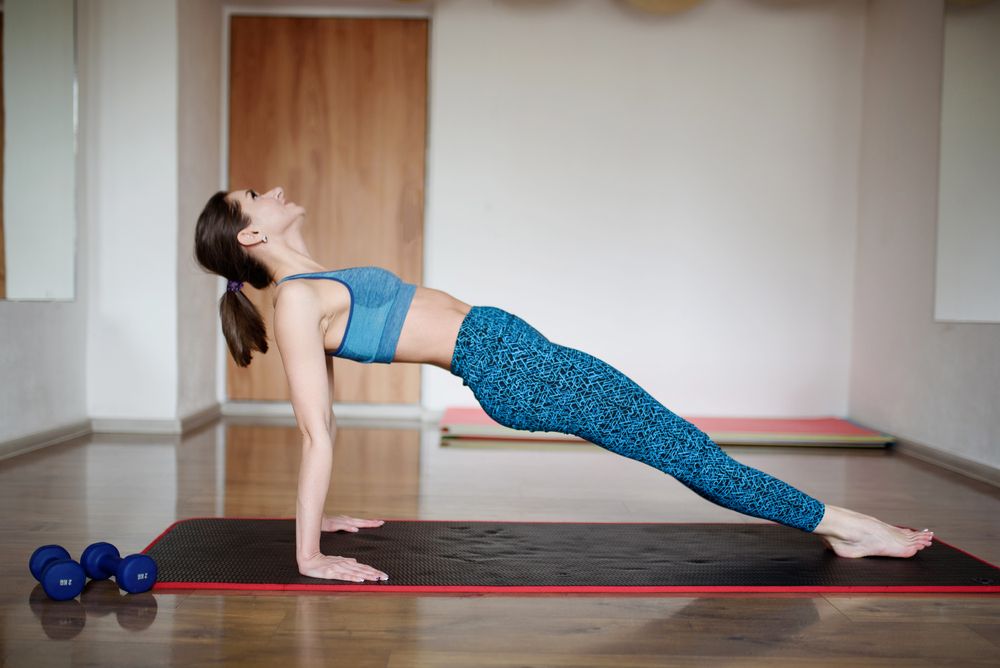
The reverse plank is an effective exercise for strengthening your core, shoulders, and lower back while simultaneously stretching your hip flexors and improving posture. It complements traditional planks by targeting the often-overlooked posterior chain.
How to Perform the Reverse Plank:
- Sit on the floor with your legs extended in front of you and your hands placed behind you, fingers pointing toward your feet.
- Press into your palms and lift your hips, creating a straight line from your head to your heels.
- Keep your core engaged and shoulders down, maintaining proper alignment.
- Hold the position for 20–30 seconds, then gently lower back down.
- Perform 3 sets.
This versatile exercise not only builds strength but also enhances flexibility and posture, making it a valuable addition to your fitness routine.
Glute Bridge March
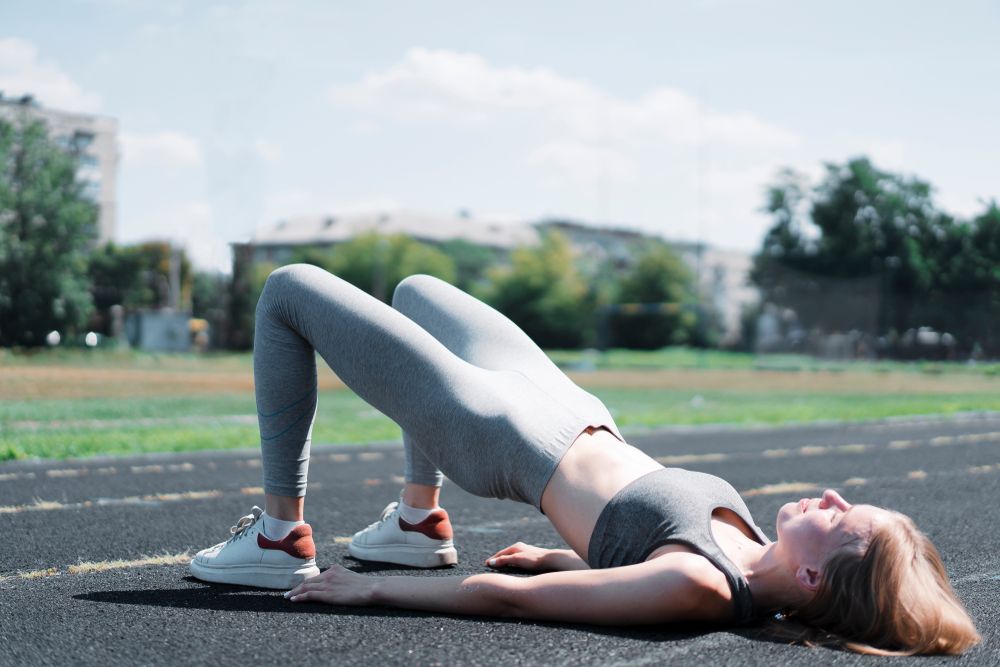
The glute bridge march is a dynamic exercise that blends core stability with glute activation. The marching motion adds a balance challenge, engaging your lower abdominal muscles while promoting hip mobility and strengthening the lower back.
How to Perform the Glute Bridge March:
- Lie on your back with your knees bent, feet flat on the floor, and arms resting at your sides.
- Press through your heels to lift your hips into a bridge position, forming a straight line from your knees to your shoulders.
- Lift your right foot off the floor, bringing your knee toward your chest while keeping your hips stable.
- Lower your right foot back to the floor and repeat with your left leg.
- Alternate sides, performing 3 sets of 10 repetitions per side.
This functional exercise strengthens your glutes and core while improving hip mobility and stability, making it a valuable addition to any fitness routine.

